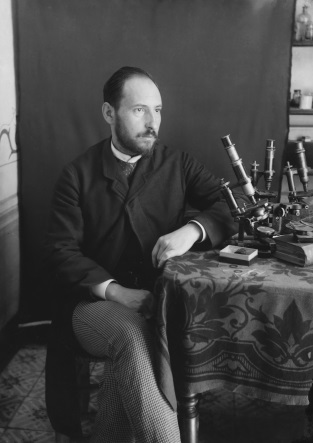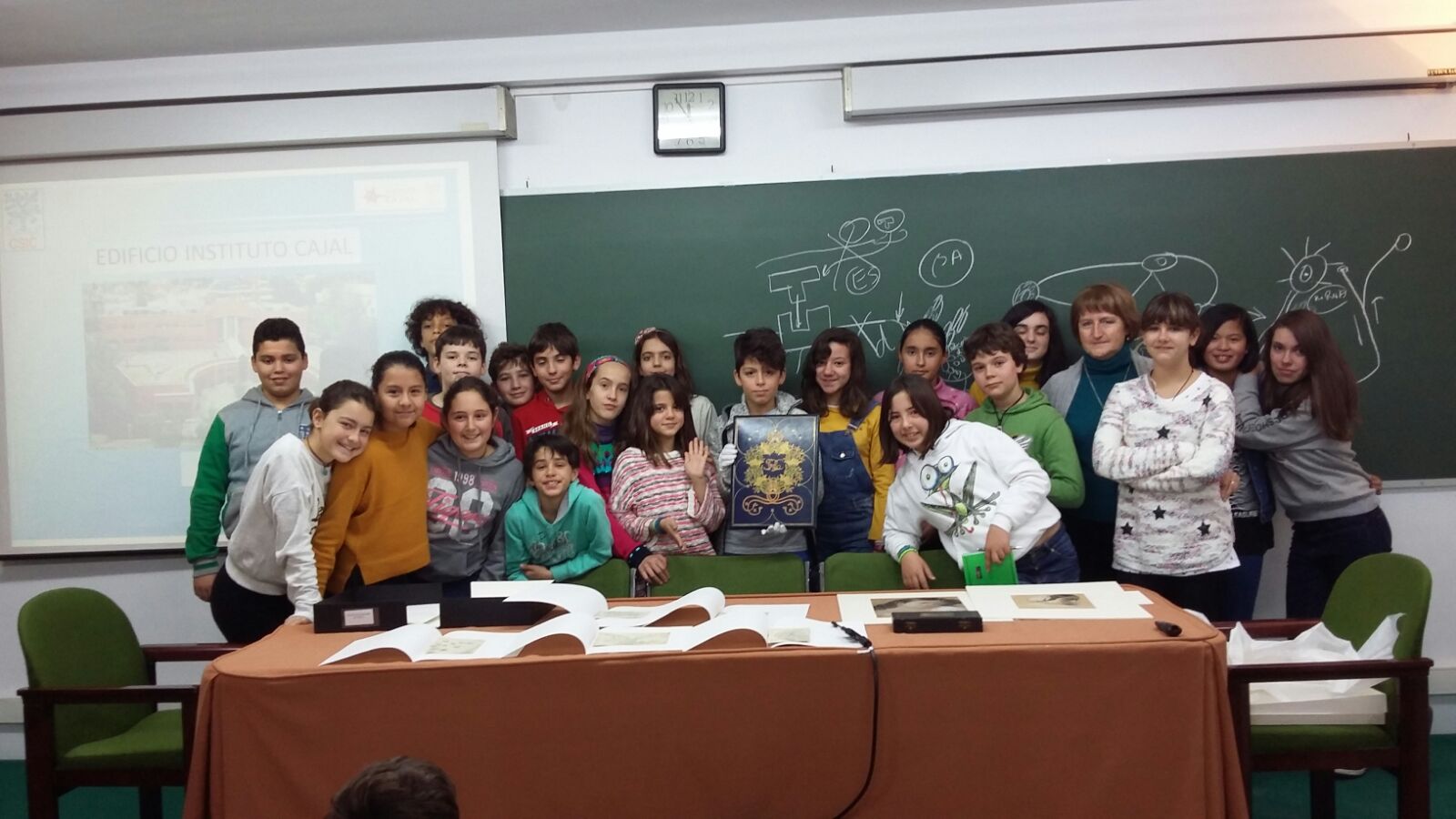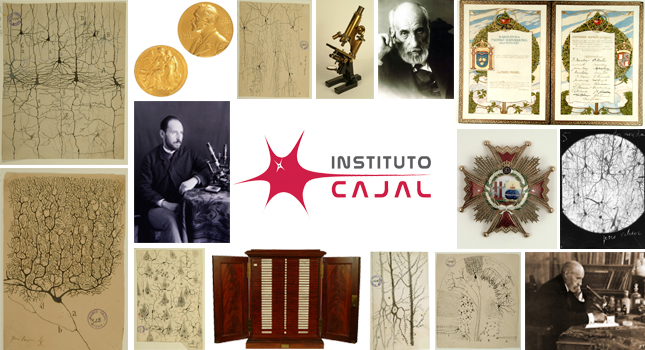|
Legacy of Cajal

For inquiries or free public tours: [email protected]
Santiago Ramón y Cajal (1852-1934) is considered the father of modern neuroscience for his outstanding studies of the microanatomy, his observations regarding degeneration and regeneration, and his theories about the function, development and plasticity of virtually the whole central nervous system. Cajal was awarded the Nobel Prize in 1906 and, spite of the passed time, his work continues to captivate and stimulate modern neuroscientists. Some of his original possessions are housed at the Cajal Institute (CSIC), Madrid, Spain. The Cajal Institute preserves the items that Cajal bequeathed to its Institute, which together are referred to as “Cajal Legacy”: ““… my collection of microscopic slides, cupboards to keep them in and some scientific devices of my property, such as the microtome and two microscopes, a Zeiss model and another Leitz model, and finally, a Zeiss microphotographic device”.The Cajal Legacy also holds other items that Cajal's family has entrusted to the CSIC in homage to his memory.
We estimate that the Cajal Legacy houses a total of 30,218 items of a widely varied nature. These items have been divided into 26 groups for cataloguing and to facilitate their study: 1. Photographic archive (2,384); 2. Precision balances (2); 3. Photographic cameras (5); 4. Correspondence (2,584); 5. Ceramics (2); 6. Colorants, Reagents and Solutions (387); 7. Notebooks (11); 8. Scientific drawings2 (1.976); 9. Artistic drawings (2); 10. Diplomas and Certificates (109); 11. Sculptures (6); 12. Phonographs (1); 13 Books, Newspapers and Journals (7,000); 14. Handwritten manuscripts (1,952); 15. Gas lighters (3); 16. Medals, Decorations and Awards (25); 17. Optic microscopes (21), Boxes (5) and Microphotography devices (1); 18. Microtomes (3); 19. Furniture (20); 20. Straight razors (9); 21. Personal objects (15); 22. Paintings (10); 23. Histological slides3 (13,676); 24. Projectors (4); 25. Telescope (1); 26. Textiles (4).

Examples of some of the items held at the Cajal Legacy. (A) Photographic archive; (B) Microtome knife; (C) Microtome; (D) Histological slide; (E) Scientific drawing; (F) Reagent; (G) Microscope.
At present there is no museum for the Cajal Legacy, and most of the Cajal Legacy now remains in a secured area with temperature, light and humidity controlled. These priceless treasures require a dedicated world-class museum, not just for Cajal’s legacy but also for his disciples. Such a museum would inspire the next generation of thinkers who will also have complex and seemingly intractable problems to solve. Meanwhile, a small permanent exhibition showing a careful selection of historical pieces of the Cajal Legacy is now open in the Institute's library, where the workplace of Cajal is recreated with original possessions bequeathed by Cajal.
The legacy of Santiago Ramón y Cajal
Memory of the World
Cajal exhibition Institute's library
In addition to the permanent exhibition in the library, The Cajal Institute collaborates with other national and foreign institutions in the dissemination of the Cajal work by conducting temporary exhibitions. An example, it is noteworthy the one that is currently underway in the Neuroscience Center "Porter Neuroscience Research Center" located National Institutes of Health (NIH), Bethesda, in the United States since 2014.
The NIH honors Santiago Ramón y Cajal, the father of modern neuroscience, with an exhibit of his original neural cell illustrations. The exhibit opened on November 6, 2014, in the new Porter Neuroscience Research Center, Building 35 on the NIH Bethesda campus. The exhibition is on YouTube at https://youtu.be/QIDUKHXqtg4
As the Cajal Institute main scope is devoted primarily to scientific research, it is only scheduled to visit the "Cajal Legacy" by individuals and schools upon request by e-mail at: [email protected], Monday to Thursday.

Picture of a recent Visit of a group of scholars (Escuelas Bosque, Madrid) in January 2016, showing the Cajal´s Nobel Prize Diploma and a collection of scientific drawings on the table
For these reasons, we are asking the help of our Spanish and international colleagues, particularly in the field of Neuroscience, relevant Associations and Societies to join our bid to obtain international recognition from UNESCO for the Cajal Legacy in its entirety, to be listed as a World Heritage treasure. Such recognition should ensure the realization of the Cajal Museum.
The intention is to have the Cajal Legacy on permanent exhibition as the "Museo Cajal y de la Escuela Histológica Española" (Cajal Museum and of the Spanish Histological School) and with this a living interactive museum program, including the availability for advanced research, lectures, meetings school programs and courses.

|